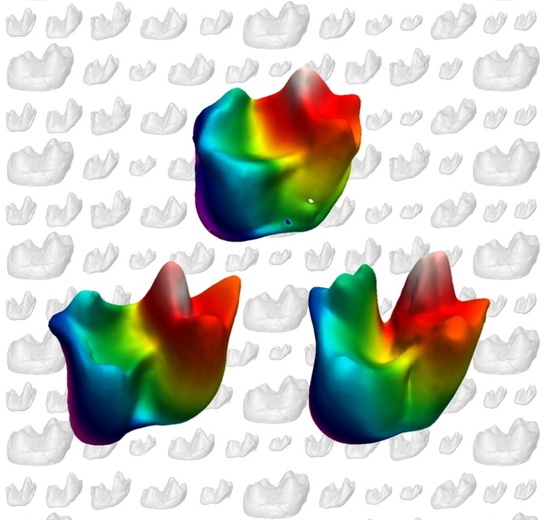Developing Methods in Comparative Morphology to Help Understand Evolution
Above- Second mandiblar molars of various fossil euprimates and plesiadapiforms (background). Three foreground teeth are representatives of the three euarchontan orders: Top, Primates (Tarsius); lower left, Scandentia (Tupaia); lower right, Dermoptera (Cynocephalus). Similarly colored regions represent equivalent regions of tooth crown as determined automatically (absolutely no user input) using algorithms described in Boyer et al. 2011.

